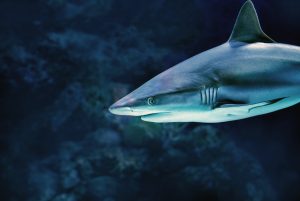
A Blacktip Reef Shark (Carcharhinus melanopterus) has a fully cartilaginous skeleton (photo credit: David Clode).
If you’ve ever eaten a fish fillet, you’ve probably had the ‘pleasure’ of picking out fish bones from your meal. While most fish are, indeed, bony (superclass: Osteichthyes), certain lineages of fish have cartilaginous skeletons, meaning that their skeletal structure is composed of cartilage, like a human ear or nose, rather than bone. Elasmobranchs (sharks, skates, and rays) and chimera (class: Chondrichthyes) have always had cartilaginous skeletons.

Atlantic Sturgeon (Acipenser oxyrinchus oxyrinchus) have secondarily derived cartilaginous skeletons (photo credit: NOAA).
Chondrosteans (sturgeon and paddlefish; subclass: Chondrostei) are another group of cartilaginous fish – but with a more complex evolutionary history. The ancestors of sturgeon and paddlefish had fully ossified, bony skeletons (they are members of Osteichthyes) but they have evolved to have secondarily derived cartilagenous skeletons (i.e., cartilage ➡ bone ➡ cartilage). They do still retain some bony elements – scutes which are modified bony scales.
